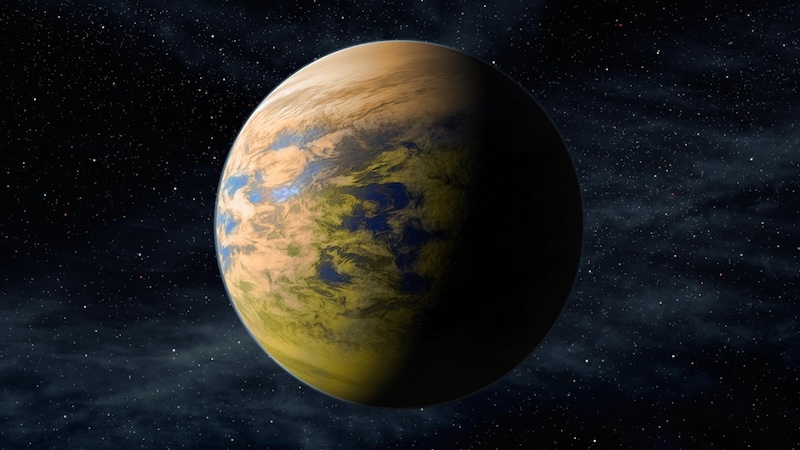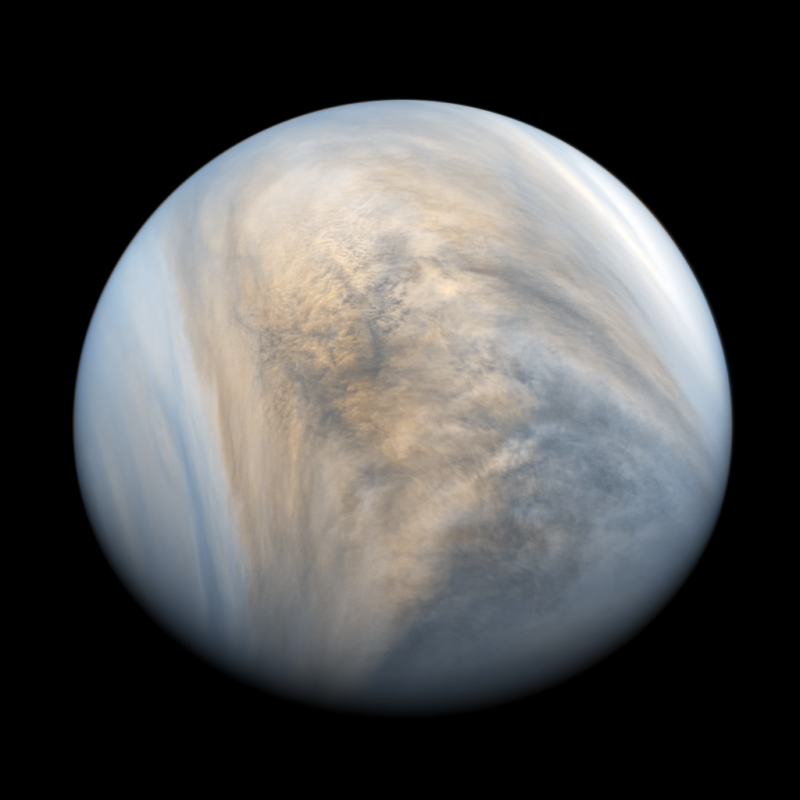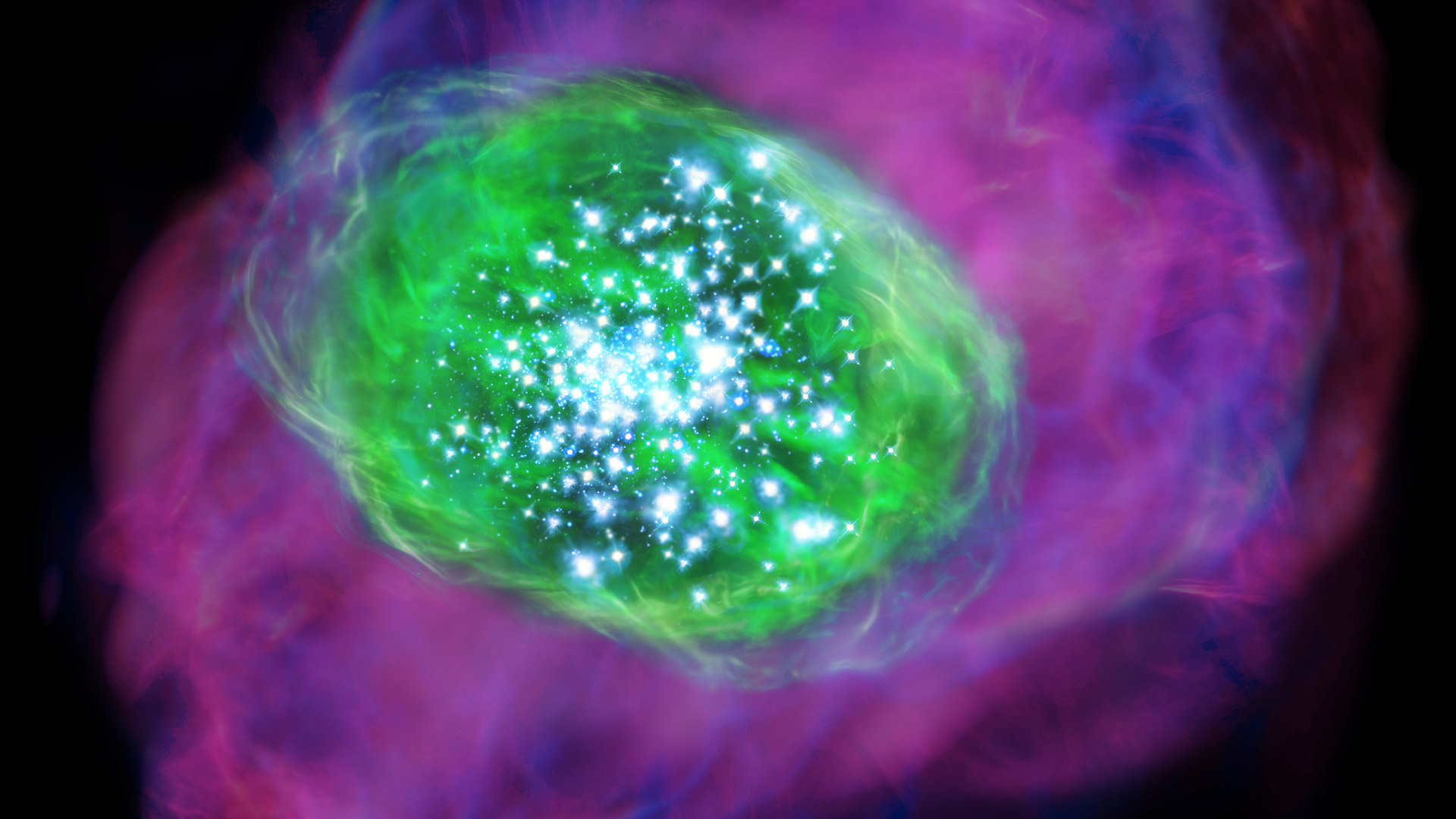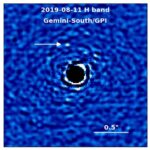Now Reading: Colorful life on exoplanets might be lurking in clouds
-
01
Colorful life on exoplanets might be lurking in clouds
Colorful life on exoplanets might be lurking in clouds


- On Earth, colorful microbes float in the clouds and high up in the atmosphere. Could the same be true on some exoplanets around other stars?
- Alien microbes could be detected by their colorful biopigments, a team of researchers said.
- Such pigments could be a strong biosignature when searching for signs of life on exoplanets.
To search for life on exoplanets, look for their colors
Searching for possible signs of life on immensely distant and small exoplanets is not an easy task. But a team of scientists led by researchers at Cornell University in Ithaca, New York, have come up with a new strategy. On November 11, 2025, the researchers said they could look for the colors of microorganisms in a planet’s clouds. With this in mind, they created the first reflectance spectra – a color-coded key – of diverse and colorful microorganisms that live in the clouds here on Earth. So now, with this key, astronomers can study the clouds of an exoplanet for possible hints of life.
On Earth, the colors of the microbes come from their biopigments. These are the colors produced by living organisms, such as the iridescence of a bird wing or the pink of a flower’s petal.
Of course, any colorful microbes in exoplanet clouds would need to be abundant enough that scientists could detect them by their spectra. But it’s an intriguing new idea for searching for alien life.
The researchers published their peer-reviewed findings in The Astrophysical Journal Letters on November 11, 2025.
Colorful microbes in Earth’s clouds
On Earth, microbes are everywhere, even in the clouds. Some of those aerial organisms have distinct, colorful biopigments. Lead author and astrobiologist Lígia Coelho, at Cornell University, said:
There is a vibrant community of microorganisms in our atmosphere that produce colorful biopigments, which have fascinated biologists for years. I thought astronomers should know about them.
On Earth, microbes in the atmosphere produce their colorful pigments to help protect themselves against the stronger ultraviolet radiation from the sun, dryness and extreme temperatures.
Co-author Lisa Kaltenegger, also at Cornell University, added:
Finding colorful life in Earth’s atmosphere has opened a completely new possibility for finding life on other planets.
How To Spot Life In The Clouds On Other Worldsastrobiology.com/2025/11/how-… #astrobiology #exoplanet #biosignatures
— Astrobiology (@astrobiology.bsky.social) 2025-11-12T19:48:13.505Z
Cloud microbes are rare on Earth
In Earth’s clouds, the colorful microbes are rarer than on the surface, but they are there. Coelho’s team required specialized techniques to collect them. They used a latex sounding balloon, aka a weather balloon. The researchers gathered them in the stratosphere, at between 13 and 18 miles (21 and 29 km) altitude.
As co-author Brent Christner at the University of Florida noted:
Our work has shown that cells are present in air masses at altitudes up to 38 kilometers (24 miles). At lower altitudes in the stratosphere, where ozone can provide some degree of protection from mutagenic wavelengths of UV, we recovered a number of bacteria that remain viable. A selection of these was analyzed in our current study with Lígia.

Colorful life on exoplanets, too?
The researchers said if these colorful microbes exist here on Earth, maybe they could be in the clouds of other planets, too. Kaltenegger said:
Now, we have a chance to uncover life even if the sky is filled with clouds on exoplanets. We thought clouds would hide life from us, but surprisingly they could help us find life.
Another bonus is that the colorful spectra could be a potential biosignature even when the planet is completely covered by clouds or haze. Other types of biosignatures might be obscured from detection.
The researchers determined that if a planet had widespread pigmented microbes in its clouds, it would look significantly different from a planet that did not have them. The planet hosting the microbes would also need to be humid.
Biopigments as powerful biosignatures
Since they are intrinsically connected to life, biopigments are a powerful biosignature, at least on Earth. So finding them in the clouds of an exoplanet would be strong evidence for microbial life. Coelho said:
Biopigments have a universal character on our planet. They give us tools to fight stresses like radiation, dryness and lack of resources. We produce them, and so do bacteria, archaea, algae, plants and other animals. They are powerful biosignatures and we’ve discovered a new way to look for them: through the clouds of distant worlds. And if life looks like this, we finally have the tools to recognize it.

Microbes in Venus’ clouds?
The strategy of looking for biopigments is reminiscent of the much-debated possibility of microbes in the atmosphere of Venus. That idea gained much traction in 2020 with the reported detection of phosphine, a possible biosignature gas. Also, scientists later detected ammonia.
But even before that, scientists had found a puzzling phenomenon in Venus’ atmosphere: unusual dark patches called the unknown absorbers. Basically, something in the upper atmosphere is unexpectedly absorbing ultraviolet light. Some scientists have theorized it could be microbes. The answer to this mystery is still unknown, although some recent studies have suggested that iron-bearing minerals might be responsible.
And while biopigment-type colors don’t seem to be part of the Venus phenomenon, it is a reminder that planetary atmospheres and clouds can be home to microbial life, at least on Earth.
Bottom line: Researchers suggest searching for colorful life on exoplanets by looking for spectral features similar those in Earth’s clouds caused by airborne microbes.
Read more: Colors of life on exoplanets
Read more: Want to find alien life? Look for patterns of energy
The post Colorful life on exoplanets might be lurking in clouds first appeared on EarthSky.
Stay Informed With the Latest & Most Important News
-
 012024 in Review: Highlights from NASA in Silicon Valley
012024 in Review: Highlights from NASA in Silicon Valley -
 02Panasonic Leica Summilux DG 15mm f/1.7 ASPH review
02Panasonic Leica Summilux DG 15mm f/1.7 ASPH review -
 03From Polymerization-Enabled Folding and Assembly to Chemical Evolution: Key Processes for Emergence of Functional Polymers in the Origin of Life
03From Polymerization-Enabled Folding and Assembly to Chemical Evolution: Key Processes for Emergence of Functional Polymers in the Origin of Life -
 04How New NASA, India Earth Satellite NISAR Will See Earth
04How New NASA, India Earth Satellite NISAR Will See Earth -
 05And Thus Begins A New Year For Life On Earth
05And Thus Begins A New Year For Life On Earth -
 06Astronomy Activation Ambassadors: A New Era
06Astronomy Activation Ambassadors: A New Era -
07SpaceX launch surge helps set new global launch record in 2024


















